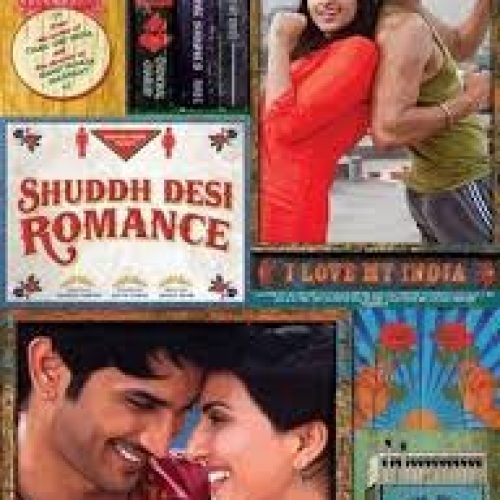With an intricate blend of humor, grief, and family dynamics, this film presents an honest portrayal of how Indian families confront, cope with, and, in some ways, circumvent loss. Directed by Seema Pahwa, it features a talented ensemble cast, including Naseeruddin Shah, Konkona Sen Sharma, Vinay Pathak, Supriya Pathak, and Manoj Pahwa, who breathe life into a setting as familiar as it is layered with complexity. Set in a small town in North India, the story unfolds over the course of thirteen days in a family home where all members have gathered for the titular “tehrvi” or the thirteen-day Hindu mourning ritual. As family members come together to mourn the patriarch’s passing, buried tensions, hidden insecurities, and unresolved family dynamics emerge, making this drama-comedy a reflective piece on familial ties, misunderstandings, and the little quirks that make families so unique.
The story revolves around Ramprasad’s family, which assembles at the family house following his death to fulfill the tehrvi ritual. As relatives from all walks of life join the grieving widow and children, the house soon becomes a microcosm of intergenerational viewpoints, individual agendas, and personal grudges. In the following days, each character’s unique personality and secrets surface as they interact, argue, and occasionally, bond. Ramprasad’s death, rather than merely being a somber event, acts as a mirror, reflecting the strained relationships, underlying resentments, and the inherent messiness of family ties. Amidst these gatherings and rituals, family members question their individual roles within the larger family unit, offering an insightful look into the unspoken tensions and subtle connections that define family dynamics.
One of the standout aspects of this film is its brilliant ensemble cast. Naseeruddin Shah’s presence as the deceased Ramprasad is felt throughout, even though he appears only in flashbacks and memories. The star of the film is undoubtedly Supriya Pathak, who plays the grieving widow, Amma. Her portrayal is layered with depth and sensitivity, capturing the emotional weight of a woman mourning her partner while trying to keep her family together. Supriya’s subdued yet powerful performance makes Amma’s character both compelling and relatable, particularly in the way she balances sorrow with pragmatism. Supporting actors like Konkona, Vinay, and Manoj effortlessly fit into their roles, each bringing unique humor and tension to the family’s atmosphere. Konkona’s restrained performance, in particular, is effective in showing the exhaustion and resignation of a character who feels overlooked in the chaos. The actors’ chemistry contributes to the film’s authentic feel, as each interaction, whether humorous or tense, resonates with believability.
Seema Pahwa’s direction deserves significant appreciation for her ability to present complex family dynamics in a nuanced yet accessible way. As a seasoned theater actor, she brings a theatrical quality to the staging of scenes, creating a sense of organized chaos within the cramped setting of the family home. Her pacing allows each character’s journey and grievances to unfold naturally, lending the story a slice-of-life feel that draws audiences into the family’s world. The direction strikes a delicate balance between humor and pathos, treating each moment of laughter and grief with equal importance. Seema’s choice to avoid over-the-top melodrama allows the narrative to maintain an understated charm, giving space for small moments of honesty and reflection amid the commotion of mourning rituals. Her direction brings a grounded realism to the film, making the family’s journey feel relatable and sincere.
The film’s cinematography by Sudip Sengupta enhances its grounded and intimate atmosphere. Set predominantly within the confines of the family home, the cinematography makes effective use of tight shots and natural lighting to capture the claustrophobic yet familiar environment. The visual design amplifies the themes of confinement and closeness, as characters share small spaces and emotions in close quarters. The color palette is kept muted, which aligns with the film’s somber theme but also adds a touch of warmth to scenes that capture the nostalgia of family gatherings. Sengupta’s cinematography manages to evoke a sense of timelessness, echoing the idea that family dynamics and traditions are passed down unchanged, even as the individuals within them evolve. By focusing on subtle expressions and interactions, the visual style helps bring the characters’ internal conflicts to the forefront.
One of the most notable aspects of the film is its subtle yet impactful score. Composed by Sagar Desai, the music complements the film’s mood, adding an undercurrent of nostalgia and poignancy without overpowering the narrative. The background score is gentle and contemplative, often highlighting moments of quiet reflection between the family members. Unlike many Bollywood films, which rely heavily on elaborate song-and-dance sequences, this one uses music sparingly but effectively, allowing each note to resonate with the audience. The restrained musical approach underscores the film’s themes of introspection and familial bonds, contributing to its overall emotional impact.
In terms of theme, the film explores the complexities of family relationships with sensitivity and insight. It sheds light on how unresolved conflicts can fester over the years, transforming simple conversations into loaded exchanges. The generational gap is another theme that the film touches upon subtly; younger family members challenge traditional customs, while elders hold on to them, creating a push and pull that feels authentic. It is a story not only about grieving but also about how family members reconnect, however imperfectly, in moments of loss. The film also highlights the realities of aging parents and the struggles of adult children caught between responsibilities and resentment, showcasing a complex web of emotions that resonate universally.
Ultimately, this movie is a poignant reminder of the ties that bind, even when they feel like burdens. With strong performances, grounded direction, and an authentic portrayal of Indian family dynamics, it captures the bittersweet reality of how families come together, argue, and love in their own imperfect ways. Seema Pahwa’s directorial debut is a heartfelt exploration of familial bonds, making it a compelling watch for anyone who has experienced the chaos and comfort of large family gatherings. For audiences who appreciate films that reflect the warmth and messiness of real-life relationships, this movie is highly recommended. It’s a beautifully crafted piece that invites viewers to reflect on their own family dynamics, leaving them with a sense of both nostalgia and introspection.







